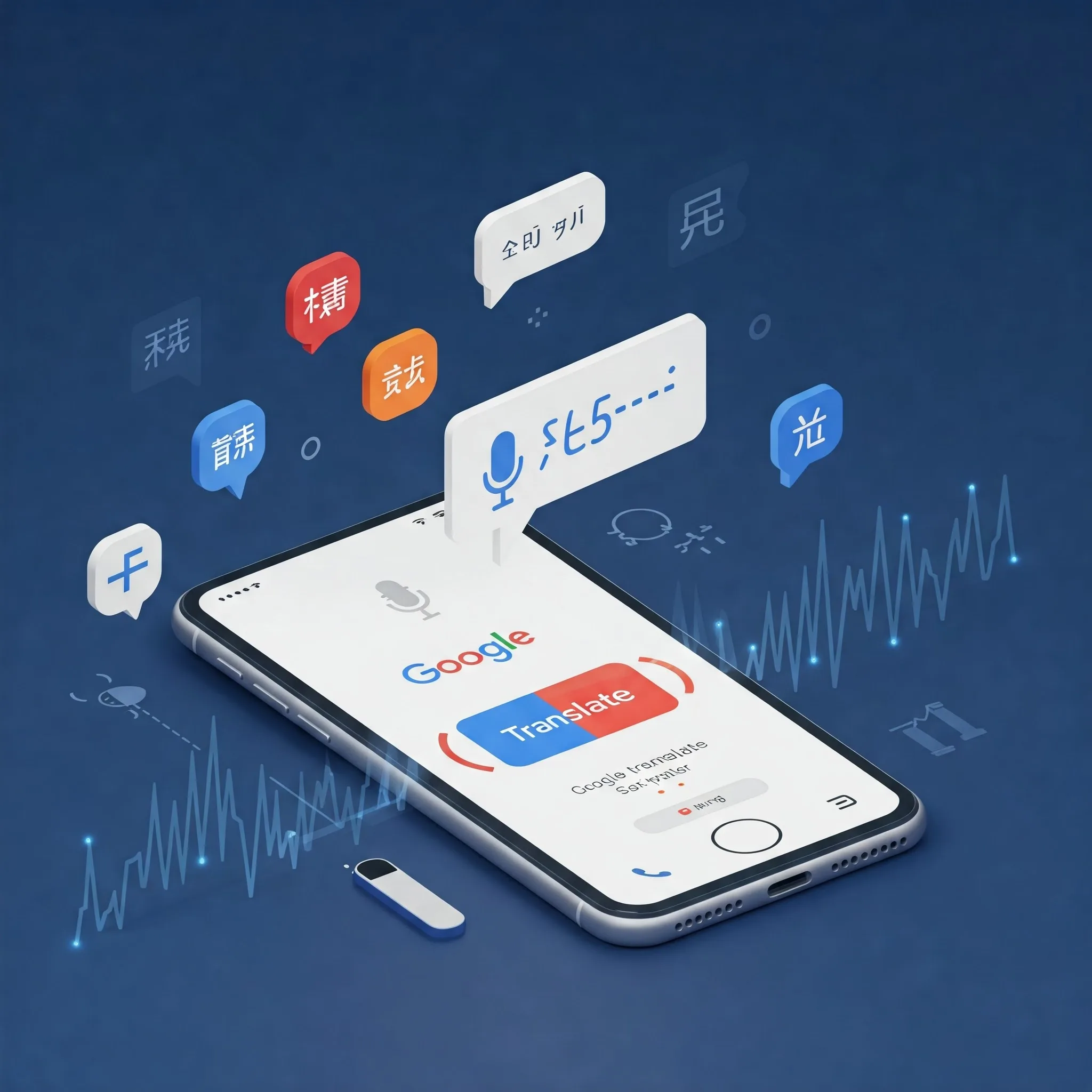Table of Contents
ToggleIntroduction
In an increasingly globalized world, effective communication across languages has become essential. Google Translate, a widely used language translation tool, has revolutionized the way people interact by breaking language barriers. One of its most valuable features is voice translation, which allows users to speak into their devices and receive instant translations in multiple languages. This article explores how Google Translate’s microphone feature works, its benefits, limitations, and the future of voice translation technology.
Understanding Google Translate’s Microphone Feature
Google Translate is a powerful translation tool developed by Google, offering text, image, and voice translations across a vast range of languages. The microphone feature, specifically, enables real-time speech-to-text translation, making conversations seamless between people who speak different languages.
How the Microphone Feature Works
Users can activate the microphone by clicking the voice input option in the Google Translate app or web version.
Once activated, the tool listens to spoken words, converts them into text, and translates them into the selected language.
The translated text can then be read aloud by the system using text-to-speech (TTS) technology.
Some versions also offer conversation mode, where two speakers can communicate back and forth in different languages with automatic translation.
Supported Languages and Accuracy
Google Translate supports voice translation for over 70 languages.
Accuracy has significantly improved over time due to advancements in artificial intelligence and machine learning.
Context recognition helps improve translations, but nuances, dialects, and regional variations can still pose challenges.
How to Use Google Translate with a Microphone
Using Google Translate’s microphone feature is simple and can be done on various devices. Here’s a step-by-step guide:
On Mobile Devices (Android & iOS)
Open the Google Translate app.
Select the languages for translation (e.g., English to Spanish).
Tap the microphone icon.
Speak clearly into your device.
The spoken words will appear as text and be translated instantly.
Tap the speaker icon to hear the translated text aloud.
On Desktop (Web Version)
Go to Google Translate.
Click on the microphone icon in the input field.
Speak into your computer’s microphone.
The translation appears on the screen.
Click the speaker icon to listen to the translation.
Offline Voice Translation
Users can download language packs for offline translation.
The microphone feature works even without an internet connection for select languages.
Accuracy may be lower compared to online translation since real-time AI processing is unavailable.
Benefits of Voice Translation
The voice translation feature in Google Translate offers numerous advantages across different scenarios:
Instant Communication Across Languages
Helps travelers, professionals, and students communicate in real-time.
Ideal for quick interactions, such as asking for directions or ordering food in a foreign country.
Enhanced Accessibility
Beneficial for people with disabilities who rely on voice input instead of text.
Helps non-native speakers improve pronunciation by hearing translated phrases aloud.
Integration with Other Google Services
Works seamlessly with Google Assistant, smart speakers, and wearable devices.
Can be used for voice commands in smart home devices.
Business and Professional Use
Facilitates meetings and negotiations between international business partners.
Assists customer service representatives in assisting foreign-language speakers.
Language Learning Aid
Provides learners with pronunciation examples and contextual usage.
Helps in practicing speaking skills by repeating translated phrases.
Challenges and Limitations
Despite its numerous benefits, Google Translate’s microphone feature has some limitations:
Accuracy Issues with Complex Sentences
While simple phrases translate well, longer or more complex sentences may lose meaning.
Idiomatic expressions and cultural nuances may not be accurately translated.
Background Noise Interference
Noisy environments can affect voice recognition and translation accuracy.
Clear pronunciation is necessary for the best results.
Privacy and Data Processing Concerns
Voice input data may be processed by Google to improve AI learning.
Users should be cautious when translating sensitive information.
Limited Offline Functionality
Offline voice translation is available but not as accurate as online processing.
Some languages are not supported in offline mode.
The Future of Google Translate’s Voice Feature
Google continues to enhance its translation tools, integrating cutting-edge AI technology to improve accuracy and usability. Future developments may include:
AI-Powered Voice Recognition
More advanced machine learning models will refine speech recognition and contextual understanding.
Real-time corrections for mispronunciations and accents.
Expansion of Supported Languages
Increasing the number of languages and dialects for voice translation.
Enhanced accuracy for less commonly spoken languages.
Augmented Reality and Smart Wearables
Integration with smart glasses and AR devices for real-time subtitles.
Wearable AI-powered translators for seamless multilingual conversations.
Voice Translation for Group Conversations
Multi-person translation capabilities for business meetings and conferences.
AI-assisted simultaneous interpretation.
Conclusion
Google Translate’s microphone feature has transformed how people communicate across languages, making real-time voice translation accessible to everyone. While there are some challenges, continuous improvements in AI and voice recognition technology promise a future where language barriers become a thing of the past. Whether for travel, business, education, or everyday communication, Google Translate remains an invaluable tool for breaking down linguistic barriers and fostering global connections.






